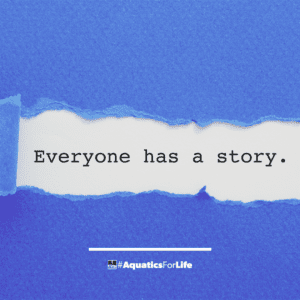Give me a minute to jump on my soapbox and share some thoughts with you: I love parks and recreation! I am passionate about what we provide for our communities, and I can share the data supporting our community's social, mental, and physical health, and financial benefits. When we talk to people in the community, they all agree that parks are important, but they don’t often choose elected officials based on their support of parks. When we go through the budgeting process, elected leaders often view parks as an easy place to make cuts.

I could go on, but here’s the bottom line: people complain loudly about potholes, but they don’t choose a community in which to live based on how good the roads are.
We need people to talk loudly about all of the amazing things that we’re doing so that our leaders hear it and refer back to that when they make decisions about budgets, assets, capital planning, and more.
Network for Good says a good story “brings people together and forms a common ground.” Stories are a way to connect what we’re doing with our community; they are interactive, and they help us make emotional connections with listeners. By reaching our community emotionally, passionately, or with undisputable data, we have the ability to inspire action and have others tell our story as well. Here are nine tips to help you tell your story in a meaningful way:
- Identify what your agency or division looks like at its best
Whether it’s serving an underserved population, impacting a single-family or participant, or bringing community members together, think about the things you do that make a difference. - Make your story conversational
It doesn’t matter if you’re standing in front of the Historical Society or writing a piece for the city newsletter, you should keep it informal and use your own “voice” so that people can feel that you’re authentic. Stay away from jargon or acronyms you use internally, and don’t be afraid to make people laugh. - Be specific
Whether you start with a single character or tell a story about your organization as a whole, Get Fully Funded reminds us to “stay focused on the details that delineate the problem and the solution you provide.” By telling a story that ties directly back to your mission, vision, or values, you deepen the impact the story has. - Make the content memorable and shareable
I once ended up on crutches mid-way through a conference, so I decided before my next presentation that I would come up with a great story to explain what was, in reality, a really uneventful injury. Even though I disclosed to a room of a hundred or so people at the end that the story was just to have a little fun, years later, I would meet people, and they would say, “Oh, you’re the one who rescued the kid at Treasure Island!” While this is not an endorsement to make things up when sharing your story with the community (seriously – don’t do that!), it does prove the point that a memorable story sticks with people long after the storyteller is gone.
- Use visual content
There is no better way to grab attention than by sharing a visual. Whether it’s a picture of a program participant, an infographic explaining how many people have been impacted by a program, or a 30-second video of something happening in the park, visuals grab attention and create anticipation of what’s coming. - Appeal to a variety of listeners
Have emotional stories ready, but don’t forget that some people are more analytical. Consider having other stories with hard facts and data supporting what you do (number of summer concert attendees, awards granted to your robotics team, how many trees are in your parks, and how much oxygen they create). As you gather stories, you may find that weaving data and emotion together becomes an effective way to reach many listeners with one story! - Don’t be afraid to include a call for action
We do a great job of asking people if they want to attend an event or visit a park, and we can’t forget to ask people to get involved. “If you want to learn more about volunteering. . . .” or “If you want to learn more about what we do” or even “If you’d like to support our programs” are all great ways to let people know that they don’t have to just be a listener – they can become a part of the story.  Create a story toolbox
Create a story toolbox
Compile real, relatable stories that connect back to your mission, vision, and values. Have slide shows or graphics ready in a single, accessible folder that you and your team can pull up any time, create both long-form stories and elevator-pitch stories, and have your best storytellers ready to go at a moment’s notice – whether they are your own team members, beneficiaries, or fanatics in your community.- Practice, Practice, Practice! Getting up and telling a story in front of a group of people can be a little scary, and it’s easy to get lost in something about which you are passionate. Practice with your inner circle, tell your story at parties, offer your elevator pitch when someone asks you what you do, and refine your message.
 We can all be proud of what we do in our communities, and telling your story in a compelling way can deepen the connection your community has with your programs. What we do is important – let’s make sure that everyone we meet can see that!
We can all be proud of what we do in our communities, and telling your story in a compelling way can deepen the connection your community has with your programs. What we do is important – let’s make sure that everyone we meet can see that!


 Create a story toolbox
Create a story toolbox